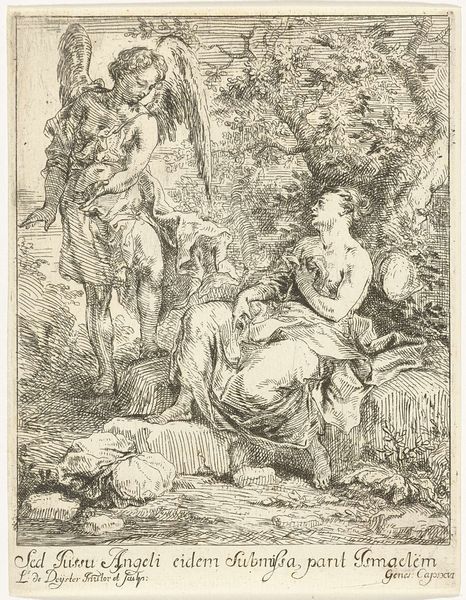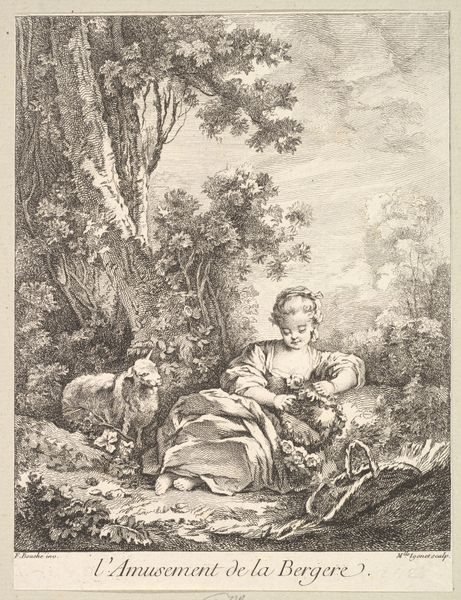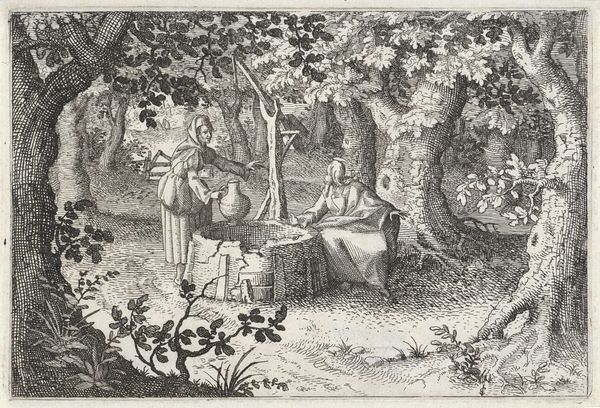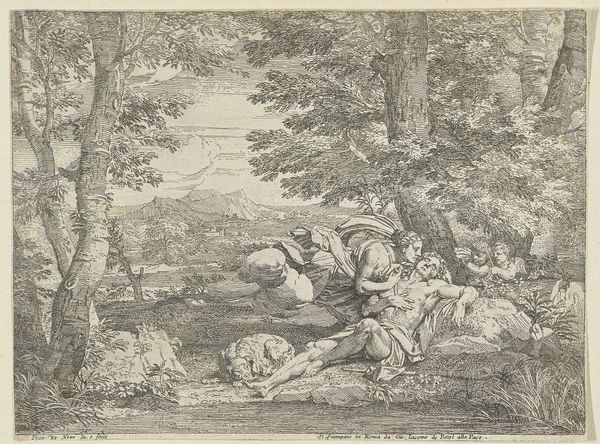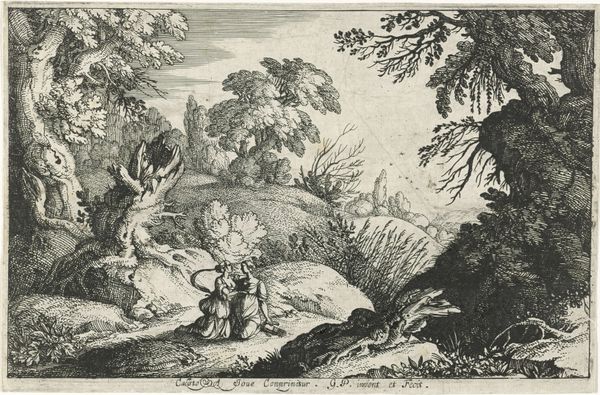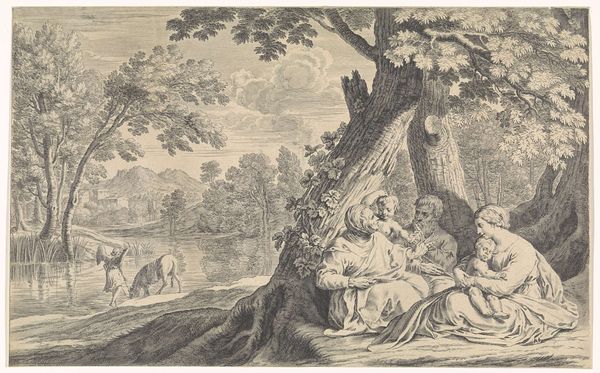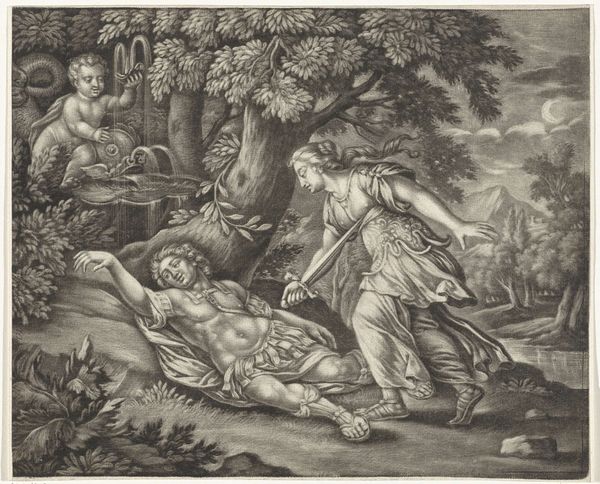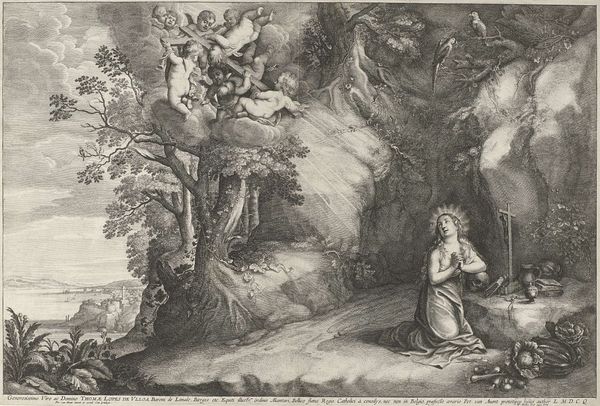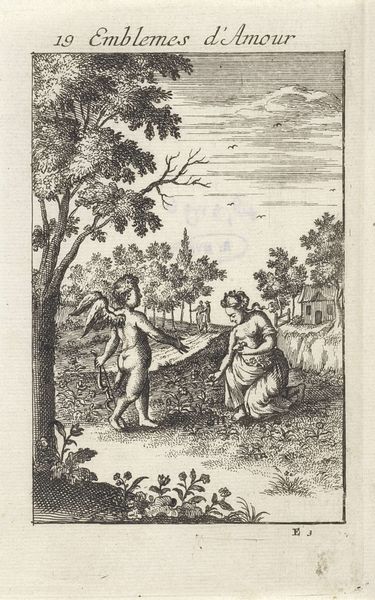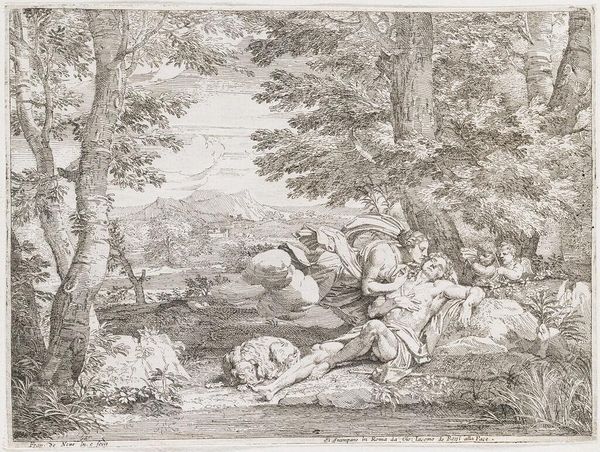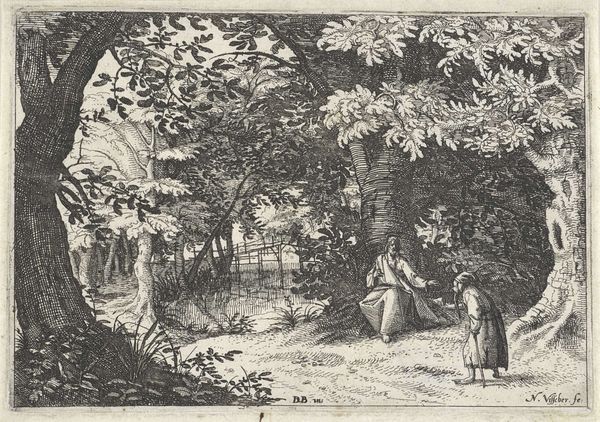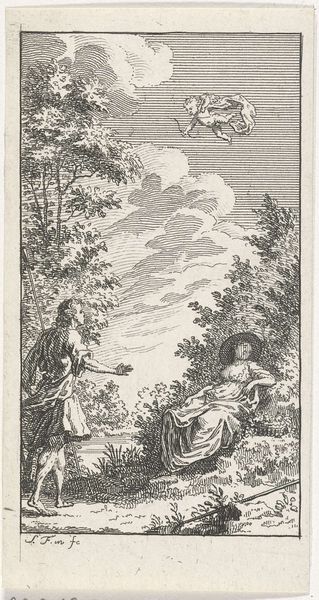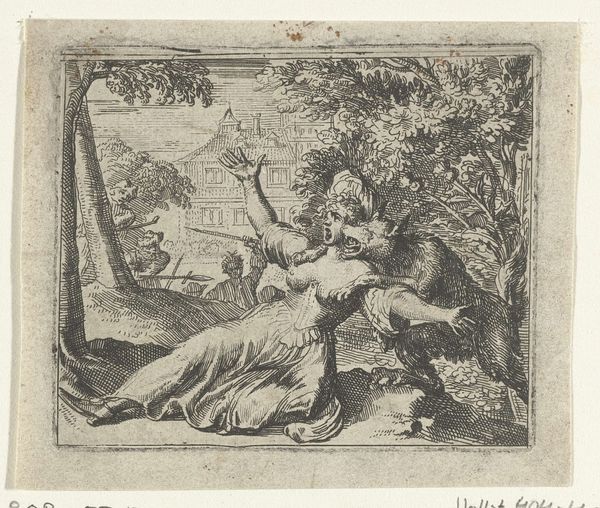
etching
#
baroque
#
etching
#
landscape
#
figuration
#
history-painting
Dimensions: height 105 mm, width 160 mm
Copyright: Rijks Museum: Open Domain
Editor: This is Moyses van Wtenbrouck’s etching, "Hagar and Ishmael in the Wilderness," created sometime between 1618 and 1628. The stark contrast and the detailed landscape really draw me in, especially the inclusion of everyday items like the water jug. What do you see in this piece, particularly given your expertise? Curator: The etching process itself is significant here. Consider the labor involved in producing multiple prints and the accessibility that affords. It allows for wider dissemination of this biblical story. The very act of etching transforms it from a singular precious object to a commodity. Does that reframing alter its meaning in any way, do you think? Editor: Absolutely, that democratizes access to art! Before printmaking, only the elite would be able to possess works. How does Wtenbrouck’s treatment of the figures play into this wider consumption of images? Curator: Notice the treatment of Hagar and Ishmael. They're not idealized, are they? Wtenbrouck is interested in the immediate context – Hagar's worn clothing, the humble water jug – grounding them within a visible and relatable realm of the baroque period's appreciation for realism in representing narratives, rather than placing them on an unreachable pedestal. Consider the potential audience; the rising merchant class may see this as validation of their own material existence reflected back in biblical stories. Editor: That’s a great point. The ordinary items alongside these biblical characters are so compelling. Thinking about the materials and process opens up a whole new layer of interpretation. Curator: Indeed! Reflecting on how the print-making process mediates the story gives it a new perspective, from one centered on artistry and a wealthy patronage, to accessibility and labor for the benefit of the burghers and middle-class citizens of the day.
Comments
No comments
Be the first to comment and join the conversation on the ultimate creative platform.
